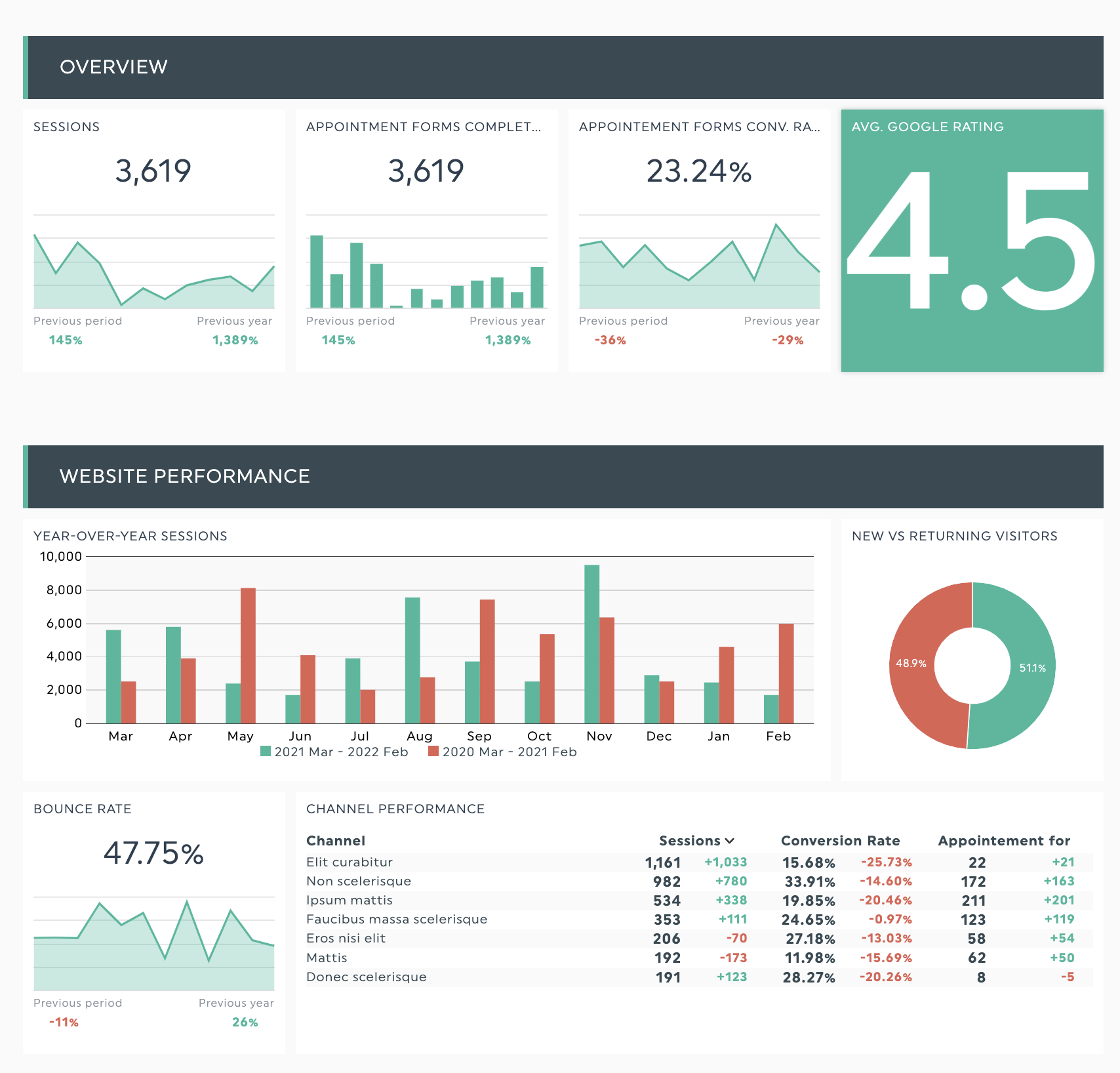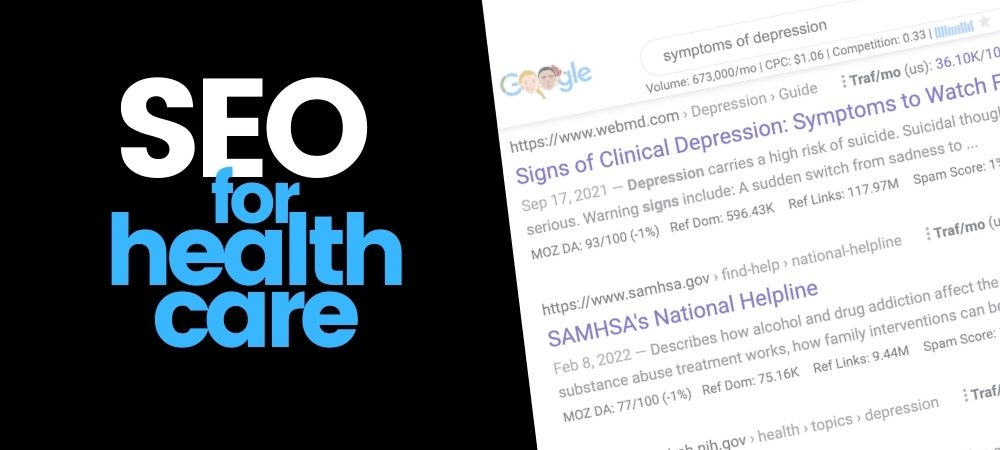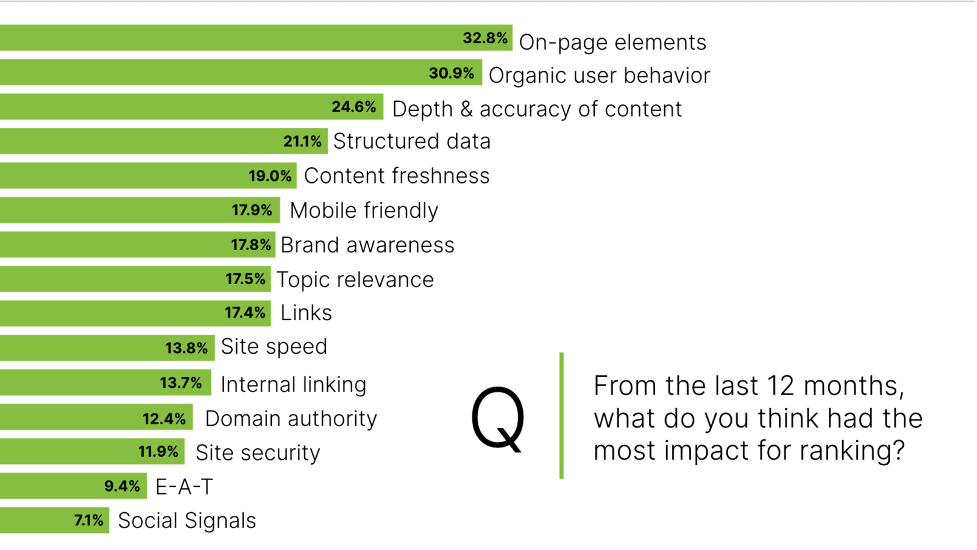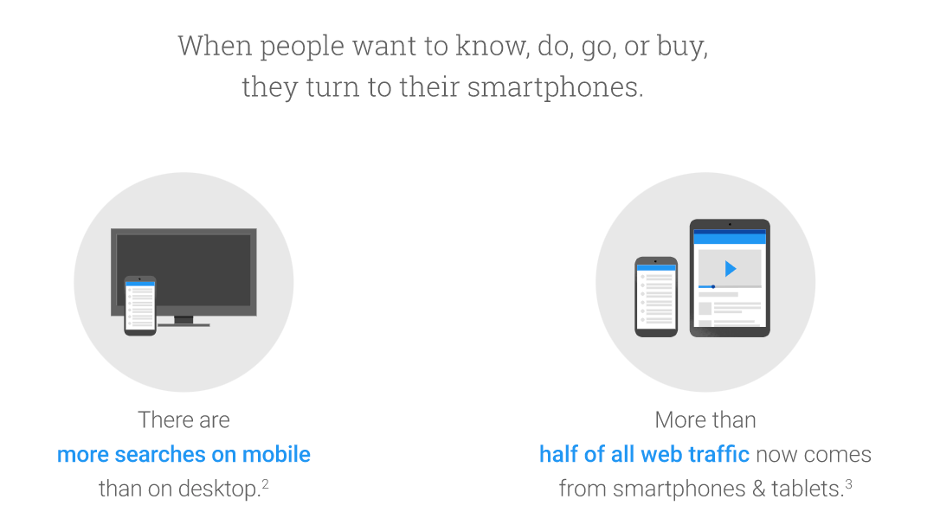As a healthcare marketer, you need to reassure your audience your organization is trustworthy. There are a wide variety of ways to achieve this, online and off, with outbound and inbound marketing, and of course, with seamless customer support.
SEO is one area you can’t neglect. This Google study shows 77% of patients use search prior to booking an appointment. So, how can you make sure your healthcare practice’s online presence is backed-up by strong search rankings? Let’s take a look at some key concepts you can use to boost your SEO and fast-track sales.
E-A-T and YMYL
E-A-T stands for expertise, authoritativeness, and trustworthiness. As we all know, misinformation runs rampant on the Internet, and E-A-T is designed to combat this trend.
Although E-A-T by itself is not a ranking factor, Google’s Search Quality Evaluator guidelines emphasize its importance and state scientific and medical advice should come from accredited professionals or subject matter experts.
YMYL means “Your Money, Your Life.” Google deems certain pages or topics “YMYL” if they affect your wellbeing, health, and safety. Topics include the news, government, finance, groups of people, and of course, healthcare. This means Google holds pages with healthcare information to a very high standard. Pages including medical advice must be clear and comprehensive, contain high-quality content, and have high E-A-T.
So, how do you avoid a poor E-A-T rating? YMYL pages with low E-A-T are:
- Poor quality
Poor quality pages include misleading or “clickbait” headlines that do not describe the content well. The content which claims to cover a broad topic but contains a sparse amount of information. For instance, if the topic title is “healthcare CRM solutions,” but the content is generic content about ecommerce CRMs. - Cluttered
Pages cluttered with ads low the quality of the user experience. One or two ads may be fine. Many ads with distracting text and images can contribute to a negative rating. - Anonymous
Pages which require a high level of user trust should make it clear who authored the content. Websites should make it easy to identify the creator, especially for websites which process financial transactions. - Shady
Even worse than anonymous content is a creator with a negative reputation. It’s significant to note that for a YMYL page, the standards are extremely high: extensive research into the creator is undertaken and poor ratings can be given due to a mixed or ambivalent reputation.
How can you ensure your E-A-T rating stays high?
- Produce good content
Make sure your content is authored by an expert and cites a variety of trusted sources. It must be clear, well-written, and contain solid information. Use evidence to support your statements. For example, if you’re writing a post about your healthcare contact center, you could include statistics from your call analytics to show how you have optimized performance. Proofread to check the spelling and grammar, as these factors also contribute to a page’s quality rating. - Update frequently
Review your posts and pages regularly to make sure the information is up-to-date and accurate. Edit and remove passages when necessary. - Highlight the creators
Avoid poor ratings due to anonymity by displaying the bylines of your contributors. Include biographical details such as their full name, job title, credentials. Additionally, you should include information about your organization and make it easy for customers to contact you. You can do so by linking About Us and Contact pages in your header or footer.
Optimizing the page experience
Clunky, slow, ad-ridden pages may affect your E-A-T rating factor negatively into search rankings. In 2021, SEO professionals declared on-page elements had the biggest impact on rankings.
Data shows that if a page load increases from 1 to 6 seconds, bounce rate increases by 106%. Bounce rate refers to the percentage of visitors to your website who exit after viewing a single page.
How do you avoid high bounce rates? A good place to start is directly accessing your metrics through Google Search Console to flag areas that need attention. After rectifying obvious issues, consider enlisting the help of SEO services to create a more streamlined user experience.
Mobile-friendliness is the most important element of page experience. In this era of smartphone apps and cloud communications, up to 70% of digital media time in the US is spent on mobile devices. Research shows patients increasingly use their phones as personal organizers:
44% of mobile device researchers book healthcare appointments, compared to 34% of computer-only researchers.
SOURCE: GOOGLE
Here are a few steps you can take to enhance your mobile performance for increased traffic and high velocity sales:
- Do a thorough health check
Use Google’s quick mobile usability test to check how your site performs and flag possible areas for improvement. - Improve load time
Shave time off your pages’ load times by removing any comments, line breaks, or any other unnecessary characters from your website’s code–including HTML, Javascript and CSS. Eliminate redundant content. - Clean up your design
Your site should be simple, content-forward and easy to use. Use easily readable font sizes. Make sure call to action (CTA) buttons are large, eye-catching and easy to click. Beware of excessive images and custom fonts, as they will cause your loading speed to drag. - Compress your images
Use compression in order to reduce the file size of your images. - Use caching
Caching is one of the most effective ways to cut down your load time and deliver a better mobile user experience.
Target healthcare keywords with precision
A surefire way to boost your SEO is to make sure your content contains keywords related to the services you offer. Keywords signal to users what your content is about and help you rank in results for relevant search terms.
However, as healthcare marketers, it’s crucial you don’t compromise your E-A-T by cramming your sentences full of jargon. Aim to answer your customers’ most frequently asked questions as clearly as possible and weave in keywords where appropriate.
Start with your primary keywords, then build on them with connected, semantically related keywords. You can easily find related keywords by searching for your main topic on Google, then scrolling to the bottom of the page to find related suggestions. For example, the Google search “cataract surgery” returns suggestions such as, “cataract surgery complications,” “cataract surgery recovery”, and “what happens during cataract surgery.”
Long-tail keywords—3 or more keyword phrases that are highly specific—can be particularly fruitful to target. They are less competitive, so it’s easier to rank higher in search results, and narrow, specific queries are easier to address in posts.
Further tips for using keywords:
Narrow your focus
Choose one primary keyword per page and aim to use related keywords throughout.
Add alt text
If your content includes images and video, don’t forget to add detailed alt text. Image alt text is the descriptive text which appears instead of an image if it doesn’t load. It is primarily used by screen readers, and can help with accessibility for blind or visually impaired users. Improving your page’s accessibility and search ranking at the same time is a win-win!
Review
The most popular keywords will change over time, so continually update your old content to ensure that you’re staying on top of the trends.

A healthcare marketing report template, such as this example from DashThis, can help you track your keywords as well as the general performance of your pages.
The formula: great content + search engine optimization
In order to boost your healthcare practice’s search ranking and appear professional and credible to prospective customers, you need to carefully balance savvy SEO strategy with amazing content.
You need great E-A-T, clear, informative content, and a well designed website which loads quickly, and displays well on both desktop and mobile.

Jessica Day is the senior director for marketing strategy at Dialpad, a modern business communications platform that takes every kind of conversation to the next level—turning conversations into opportunities. Jessica is an expert in collaborating with multifunctional teams to execute and optimize marketing efforts, for both company and client campaigns. Connect with her on LinkedIn.











